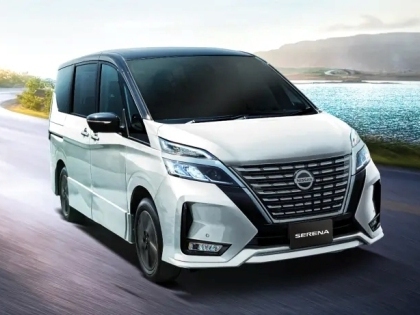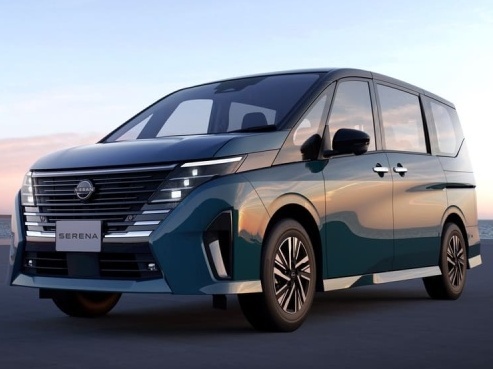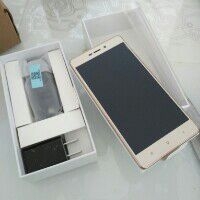Q
how to change nissan serena key battery
Here's how to swap out the battery in your Nissan Serena's smart key – it's a pretty straightforward job. First, grab a CR2032 coin battery. Then, take a small screwdriver or even a coin and gently pry open the seam on the key fob to split the case into two halves. Pop out the old battery, making sure to note which way the positive and negative sides were facing. Drop the new battery in with the positive side up, snap the case back together, and test the buttons to make sure everything works.
A quick heads-up: Serena key designs might vary slightly between model years, so if you run into trouble, check your owner's manual or swing by a Nissan authorized service center for help. For our friends in Malaysia, that local humidity can take a toll on battery life, so it's a good idea to replace it every 1-2 years as preventive maintenance. Also, try to keep the key away from water and extreme heat when you can.
Smart keys are pretty crucial these days – besides just unlocking the doors, your Serena's fob probably handles the engine immobilizer and maybe even remote start. So keeping it powered up is a big deal. If it still doesn't work after a battery change, the key might need to be re-paired or there could be another issue. In that case, better let a professional tech take a look.
Special Disclaimer: This content is published by users and does not represent the views or position of PCauto.
Related Q&A
Q
How much is the 2023 Nissan Serena?
The 2023 Nissan Serena is priced approximately between RM 140,000 and RM 160,000 in the local market, with the exact figure depending on the trim level—like the S-Hybrid or Highway Star. Naturally, higher-spec versions command a higher price tag. This MPV is renowned for its spacious 7-seater layout, hybrid powertrain, and comprehensive safety features, including ProPILOT semi-autonomous driving assistance, making it ideal for family users or scenarios requiring multiple passengers. Notably, Serena's e-POWER hybrid technology delivers a smooth driving experience with low fuel consumption, while the dual electric sliding side doors significantly boost convenience. If you're interested in this model, we recommend heading to a nearby dealership for a test drive to experience its space and driving dynamics firsthand. You can also inquire about the latest promotions or financing plans—there might be opportunities to secure a better deal or complimentary extras.
Q
how to use nissan serena tv
The Nissan Serena's in-car entertainment system (TV function) is mainly controlled via the central touchscreen. For Malaysian users, you'll need to start the vehicle and switch on the display first. From the main menu, just select "TV" or "Multimedia" to access the TV feature. If your Serena is equipped with a DVB-T2 digital TV tuner, it can auto-search for channels or you can tune manually. Some models even let you connect your phone or external devices via HDMI to play content. It's best to use this feature when the vehicle is stationary for safety, and remember to stick to the frequency regulations set by Malaysia's Communications and Multimedia Commission (MCMC).
Expanding on that, the Serena's multimedia setup also supports Bluetooth, USB, and smartphone mirroring (like Apple CarPlay/Android Auto), making it easy to integrate navigation and entertainment. If you run into signal issues, check the antenna connection or try resetting the system. This kind of kit is pretty standard for MPVs in Malaysia's class, balancing everyday practicality with the family's entertainment needs nicely.
Q
how to connect bluetooth nissan serena
To connect Bluetooth in a Nissan Serena, first start the vehicle and make sure the infotainment screen is on. From the main menu, select "Settings" or "Bluetooth" to turn on the car's Bluetooth. Then, go to your phone's Bluetooth settings and search for available devices. Look for "Nissan Serena" or a similar name and tap to pair. The infotainment screen will display a pairing code—just confirm it matches the one on your phone, and you're connected. Once paired, you can stream music or take calls through the car's system.
Malaysian users should note that Bluetooth functionality might vary slightly across Serena models depending on the year and trim level. If you run into connection issues, try restarting the infotainment system or your phone's Bluetooth. Also, keeping your phone's OS updated helps with better compatibility.
Bluetooth is now a standard feature in modern cars, and beyond just phone pairing, some models even support Bluetooth key access or multi-device connections. It's a good idea to regularly check for vehicle system updates to unlock new features or performance improvements. Keep in mind that Bluetooth stability can be affected by nearby electronic interference—if you experience dropouts, try turning off other wireless devices to minimize disruptions.
Q
how many miles to the gallon does a nissan serena do
The Nissan Serena has long been a favorite MPV in Malaysia, and its fuel efficiency really depends on which variant and powertrain you go for. From the official figures, the petrol-powered models with the 2.0L naturally aspirated engine deliver around 12-14 km/L combined (that's roughly 28-33 mpg). But if you step up to the e-POWER hybrid version, you're looking at a noticeable jump to 18-20 km/L (about 42-47 mpg). Of course, real-world numbers can vary based on how you drive, the roads you're on, and how much you're carrying.
For Malaysian buyers, the hybrid isn't just about saving at the pump—it also qualifies for the government's tax incentives under the Energy Efficient Vehicle (EEV) scheme. Plus, with its flexible interior space and comfort, the Serena already makes a solid case as a family hauler. My advice? Take both powertrain options for a test drive to get a feel for their real-world performance, then weigh that against your budget and needs. And don’t forget, keeping up with regular maintenance and driving smart will help you get the best possible fuel economy out of whichever Serena you choose.
Q
how long is a nissan serena
The Nissan Serena is a pretty popular MPV in the Malaysian market. Its body length varies slightly across different generations and trims, but take the current third-gen Nissan Serena S-Hybrid sold here – it stretches around 4,775mm long, 1,740mm wide, and 1,865mm tall, with a 2,860mm wheelbase. That size strikes a nice balance, offering a roomy seven-seater cabin while still handling Malaysia's city streets and parking spots like a pro.
As a family hauler, the Serena has won over plenty of Malaysian households with its comfy ride, flexible seating layouts, and fuel efficiency. The hybrid S-Hybrid variant, in particular, steps up the MPG game, making it solid for both long drives and daily commutes. Plus, it comes loaded with handy features: those dual power sliding doors, smart key entry, and advanced safety kit – all checking the boxes for what Malaysian buyers want in a do-it-all family car.
If you're eyeing an MPV, besides size, it’s worth comparing fuel economy, how well space is used, and after-sales service across models to find the best fit for your needs.
Q
how wide is a nissan serena
The Nissan Serena measures 1740mm in width, and this MPV has become a hit among Malaysian families thanks to its roomy interior and practicality. Its width strikes a nice balance between city-driving agility and passenger comfort, making it well-suited for Malaysia's diverse road conditions. To break it down a bit more, width is a big deal when it comes to how a vehicle handles and how easy it is to park – especially in big cities like KL. A slimmer profile makes squeezing through tight streets and navigating compact parking spots way less of a hassle. The Serena sits on the narrower side of the mid-size MPV spectrum, which means it still has enough shoulder room to comfortably fit three rows of seats without making daily drives feel like a chore.
Beyond just size, Malaysian MPV buyers also care about fuel efficiency and features, and the Serena delivers a solid all-around package here too. Take its smart hybrid tech, for example – it does a great job keeping fuel costs down, whether you're tackling a long road trip or just the daily commute.
Q
how much does a nissan serena cost
In Malaysia right now, the Nissan Serena's pricing varies depending on the trim and specs you go for, roughly sitting between RM 139,000 and RM 160,000. Of course, that figure can shift a bit based on dealer promotions or any extra accessories you might add. This MPV has become a hit with family buyers thanks to its generous space, comfy ride, and that practical hybrid setup – especially the e-POWER version. It's a solid pick if you regularly need to ferry around a crowd.
Now, it's not the only player in the game. Rivals like the Toyota Innova and Honda Odyssey are also big contenders in this segment, but the Serena really stands out when it comes to fuel efficiency and those flexible seating configurations. If you're thinking about getting one, I'd definitely recommend heading to an authorized dealer for a test drive first. Take the time to compare the different variants too – like the powertrain differences between the S-Hybrid and e-POWER models, and whether features like the ProPILOT driver assistance system actually fit your needs. Oh, and keep an eye on Nissan Malaysia's official campaigns; every now and then they run deals like interest-free loans or free service packages, which are always worth checking out.
Q
nissan serena how many cc
The Nissan Serena is a pretty popular family MPV in the Malaysian market. Its engine displacement varies a bit depending on the year and trim, but the common models you'll find these days come with a 2.0-liter naturally aspirated engine – specifically 1997cc. It's part of the efficient MR20DD series, featuring direct injection tech that balances power delivery and fuel economy, making it a solid choice for daily family use or longer road trips.
In Malaysia, they also offer the S-Hybrid version. That electric motor assist helps knock down fuel consumption even more, which lines up well with local buyers' focus on practicality and a bit of eco-friendliness.
For MPVs, though, displacement is just one piece of the puzzle. You really need to look at how the transmission is tuned – like the smoothness of that X-Tronic CVT – and the overall weight of the car to get a feel for real-world performance. If you're after a bit more zip, keep an eye on its low-end torque; it's actually quite handy for city driving.
Malaysian car shoppers should also check out local reviews for insights on the Serena's space flexibility and comfort. But honestly, nothing beats heading to an authorized dealer for a test drive to get the real feel behind the wheel.
Q
how to use nissan serena roof monitor
In the Nissan Serena, the Roof Monitor is primarily designed for rear passengers to enjoy entertainment or check vehicle info, and it’s super easy to use. First, make sure the car is powered on, then fire up the monitor using the center console or remote control. Pick your input source—whether it’s DVD, USB, or a Bluetooth-connected device. It supports all sorts of media formats, perfect for family trips when you want to play movies or music. Plus, some models even have split-screen mode, so front and back passengers can watch different stuff at the same time.
For Malaysian users, the Serena’s Roof Monitor is a game-changer on long drives, especially if you’ve got kids in tow. It really cuts down on the boredom factor during those road trips. A quick heads-up though: for safety’s sake, drivers should avoid messing with the monitor while driving—no need to distract yourself. And don’t forget to check for firmware updates every now and then to keep it running smoothly and get the best experience.
Beyond the Roof Monitor, the Nissan Serena comes with plenty of comfort features, like flexible seating layouts and a smart air-con system, which all add up to a better ride. It’s a hit in the Malaysian market, ideal for folks who value practicality and family-friendly design.
Q
what are the common problems with nissan serena?
The Nissan Serena is a popular MPV here in Malaysia, but like any vehicle, it has its quirks. One common issue owners report is the CVT transmission might start to jerk or make odd noises after some miles – keeping up with regular transmission fluid changes is a good way to help it last longer. Another thing we've heard from drivers is that the power sliding doors can sometimes act up, either not sensing properly or moving sluggishly. A lot of the time, that's just dust on the sensors or a loose wiring connection; a little regular cleaning and maintenance can go a long way in preventing those headaches.
On the earlier models, the engine mounts can take a beating from all the vibrations over time, leading to a slight shake when the car's idling. Luckily, swapping out those mounts usually fixes that right up. For the hybrid Serena, you might notice the battery pack's performance dips a tiny bit in our hot, humid climate, but honestly, it's not really noticeable in day-to-day driving.
That said, the Serena's biggest selling points are its roomy interior and flexible seating – perfect for Malaysian families. It's also pretty fuel-efficient for its class. Stick to the manufacturer's recommended service schedule, and you'll avoid most of these niggles. If something more serious pops up, though, it's best to head to an authorized service center. That way, you know they're using genuine parts and have the proper diagnostic tools to get to the bottom of it.
Popular Cars
Model Year
Car Compare
Car Photo
Latest Q&A
Q
Does the 2019 Golf GTI have a timing belt or chain?
The 2019 Golf GTI uses a timing chain instead of a timing belt—a design that offers better durability and lower maintenance costs. Typically, a chain lasts as long as the engine itself and rarely needs replacement, whereas a belt requires inspection or replacement every 60,000 to 100,000 km. If neglected, a worn belt can snap and cause severe engine damage.
VW’s EA888 engine family has long relied on chain-driven systems, which are relatively quiet and highly reliable. That said, it’s crucial to periodically check the tensioner’s condition. Some earlier models experienced timing issues due to tensioner design flaws, but this was addressed in the 2019 version.
For performance enthusiasts, a chain system handles high-revving stress better, making it a common choice for hot hatches like the GTI. For daily driving, just stick to VW 50400/50700-spec oil as recommended in the manual—proper lubrication keeps the chain system healthy long-term.
One heads-up: If you hear noticeable metallic rattling near the front of the engine, have the guides or tensioner inspected ASAP. Unlike the telltale belt squeal before failure, this noise is a classic sign of chain-related wear.
Q
What is the recall on the 2019 GTI?
The 2019 Volkswagen Golf GTI was subject to a safety recall addressing two potential issues. First, the fuel pump control unit software could malfunction, potentially causing engine stalling in rare cases. Second, some vehicles might have rear suspension stabilizer link bolts that weren't tightened to specification, posing a loosening risk. Owners can visit authorized dealers for free software updates or bolt retightening.
These proactive recalls demonstrate Volkswagen's commitment to safety. Dealers often handle outstanding recall items during routine maintenance.
For performance-oriented models like the GTI, it's wise to go beyond recall checks. Pay close attention to the turbo system, DSG transmission fluid, and brake wear—these components endure more stress during spirited driving. If warning lights appear or you notice unusual noises, get a professional inspection promptly. Keeping the car in top shape ensures you can fully enjoy its dynamic capabilities.
Q
Does the 2019 GTI require premium gas?
The 2019 GTI does recommend using high-octane fuel (typically RON 95 or above). Its 2.0L turbocharged engine has a relatively high compression ratio, and premium gas ensures optimal performance while reducing knock risk. It also helps maintain engine cleanliness and long-term reliability.
While the car may tolerate lower-octane fuel (like RON 92), you’d see slightly reduced power output and fuel efficiency. Over time, it could also affect engine longevity. Turbocharged engines are particularly sensitive to octane ratings since turbos generate higher heat and pressure—high-octane fuel handles these conditions better.
Mixing different fuel grades occasionally won’t hurt, but sticking to the manufacturer’s recommendation is ideal. Also, periodic fuel additive treatments can help clean carbon buildup, especially for direct-injection engines.
One more thing: even with the same octane rating, fuel additive packages vary by brand. So, picking a reputable gas station matters too.
Q
How long will a 2019 GTI last?
The lifespan of a 2019 GTI largely depends on maintenance and driving habits. With regular oil changes, transmission fluid replacements, and avoiding aggressive driving, it can easily clock over 200,000 kilometers—or even more. Its 2.0T engine and DSG gearbox are proven combos, and as long as you stick to the factory service schedule, mechanical reliability won’t be an issue.
Just keep in mind: turbocharged engines demand extra care. Always use the right spec full-synthetic oil and monitor the cooling system. Climate plays a role too—hot, humid conditions mean paying extra attention to rubber seals and electronics. Every 50,000 km, have the timing chain and high-pressure fuel pump inspected (key items for turbos).
Driving style matters. Don’t redline it constantly, and let the engine warm up properly after cold starts. Rustproofing helps long-term durability, so regular underbody washes are smart. Nail these details, and this car’s built to last.
Q
How fast is the 2019 GTI?
The 2019 GTI truly delivers when it comes to performance. Under the hood lies a punchy 2.0-liter turbocharged four-cylinder, churning out 228 horsepower and 350 Nm of torque. Whether you opt for the engaging 6-speed manual or the lightning-fast 7-speed DSG, this hot hatch rockets from 0-100 km/h in just 6.3 seconds, with an electronically limited top speed of 250 km/h.
What really sets the GTI apart is its razor-sharp handling. The sport-tuned suspension and electronic differential lock work together to deliver precise steering and rock-solid cornering stability. It’s the perfect blend of everyday practicality and proper driver’s car thrills—a well-rounded hot hatch in every sense.
For enthusiasts, the GTI’s tuning potential is massive. Many owners go for ECU remaps or intake/exhaust upgrades to squeeze out even more power. Just remember to keep things street-legal—safety and compliance should always come first. Around here, these pocket rockets have a solid following, and it’s easy to see why.
View MoreRelated News

Nissan Serena Interior: Smart, Spacious, and Made for Families
JohnJul 18, 2025

Nissan Serena: A Multi-Functional Model Making Travel More Comfortable
RobertMay 1, 2025

Thailand Motor Expo 2024 Focus: Nissan SerenaC27 to C28, What to Look Forward to More?
LienNov 29, 2024

It used to be as powerful as Hilux, but now it has to avoid competing with Hilux.
Kevin WongNov 18, 2025

In Malaysia, which sliding door MPVs are available?
MichaelOct 30, 2025
View More


















Pros
Cons